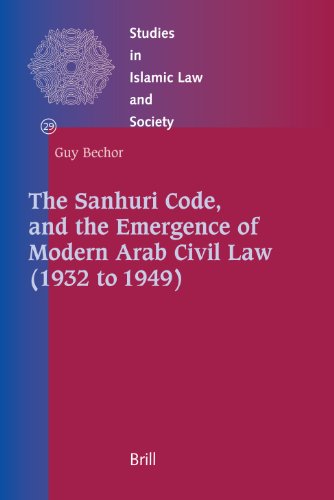

Most ebook files are in PDF format, so you can easily read them using various software such as Foxit Reader or directly on the Google Chrome browser.
Some ebook files are released by publishers in other formats such as .awz, .mobi, .epub, .fb2, etc. You may need to install specific software to read these formats on mobile/PC, such as Calibre.
Please read the tutorial at this link: https://ebookbell.com/faq
We offer FREE conversion to the popular formats you request; however, this may take some time. Therefore, right after payment, please email us, and we will try to provide the service as quickly as possible.
For some exceptional file formats or broken links (if any), please refrain from opening any disputes. Instead, email us first, and we will try to assist within a maximum of 6 hours.
EbookBell Team

4.1
30 reviews
ISBN 13: 9789004158788
Author: Guy Bechor
Dr. ‘Abd al-Razzāq al-Sanhūrī (1895-1971) is one of the most prominent jurists to emerge to date in the Arab world. His alarm at the growing social gap in his country, Egypt, during the first half of the twentieth century, fueled his vision of establishing moral social order by means of a new civil code.
Although Sanhūrī’s chosen tool was the legal text, this book argues that his vision was essentially a social one: to introduce the principles of compassion, solidarity and fairness, alongside progress and pragmatism, into polarized Egyptian society, whereby property laws acquired a social function, the laws of partnership were perceived as having an educational value, and contract law was activated as a balance favoring the weaker members of society.
Accordingly, this book examines the drafting of the Egyptian Civil Code, exposing the hitherto unknown sociological strata of this act of legislation.
Preliminary Material (G. Bechor) – Pages i–xvi
Introduction – Law, History and Society (G. Bechor) – Pages 1–20
Chapter One
3. Law as Remedy (G. Bechor) – Pages 21–57
Chapter Two
4. The Structural Engineering of the Code — The Gate to the Concealed (G. Bechor) – Pages 59–97
Chapter Three
5. The Social Function of Property Law (G. Bechor) – Pages 99–145
Chapter Four
6. Contract Law as Ideology — The Emergence of Contractual Justice (G. Bechor) – Pages 147–210
Chapter Five
7. The Dominion of Progress (G. Bechor) – Pages 211–255
Chapter Six
8. Toward a New Modus Vivendi: Legal Flexibility (Muruna) as a Social Interest (G. Bechor) – Pages 257–307
Chapter Seven
9. The Lesser Evil (G. Bechor) – Pages 309–323
Bibliography (G. Bechor) – Pages 325–330
Index (G. Bechor) – Pages 331–341
the samurai and their code
the samurai code ww2
the samurai code of conduct
the samurai code of behavior and honor was known as
what is the code that samurai lived by called
what is the code of the samurai
Tags: Guy Bechor, Sanhuri, Code